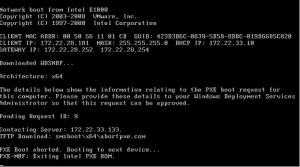How to Screenshot on Windows: A Step-by-Step Guide
How to Screenshot on Windows: A Step-by-Step Guide


Introduction
Taking screenshots on your Windows computer is a valuable skill that allows you to capture and save images of your screen. Whether you want to capture an error message, save an interesting image, or share information with others, knowing how to take screenshots is essential. In this comprehensive guide, we will walk you through the step-by-step process of capturing screenshots on Windows. By following these instructions, you’ll become proficient in taking screenshots using different methods and shortcuts.
Step 1: Understanding Different Types of Screenshots
Before we dive into the details, it’s important to understand the different types of screenshots you can capture on Windows:
- Full Screen: Captures the entire contents of your screen, including all open windows and the taskbar.
- Active Window: Captures the currently active window, including its contents and title bar.
- Selected Area: Allows you to select and capture a specific area of the screen.
- Specific Window or Application: Lets you capture a specific window or application, even if it’s not currently active.
Now that we have an overview of the different types of screenshots, let’s explore the various methods to capture screenshots on Windows.
Step 2: Using Keyboard Shortcuts
The easiest and most commonly used method to capture screenshots on Windows is by using keyboard shortcuts. Windows provides several built-in shortcuts that allow you to capture different types of screenshots. Here are the most common keyboard shortcuts:
Full Screen Screenshot
Press the PrtScn (Print Screen) key on your keyboard. This captures the entire screen, but it doesn’t provide any visual indication that a screenshot has been taken.
To save the screenshot, open an image editing program such as Paint, press Ctrl + V to paste the screenshot, and then save the image.
Active Window Screenshot
Press Alt + PrtScn together. This captures only the active window or application, making it useful when you want to focus on a specific window without capturing the entire screen.
As with the full-screen screenshot, open an image editing program, paste the screenshot using Ctrl + V, and save the image.
Selected Area Screenshot
Press Windows key + Shift + S simultaneously. This shortcut allows you to select a specific area of the screen to capture.
After pressing the shortcut, the screen will dim, and the cursor will change to a crosshair reticle. Click and drag to select the desired area. Once you release the mouse button, the screenshot will be copied to the clipboard.
To save the screenshot, open an image editing program, paste the screenshot using Ctrl + V, and save the image.
Specific Window or Application Screenshot
If you want to capture a specific window or application, follow these steps:
- Make sure the window or application you want to capture is active and visible.
- Press Alt + PrtScn together. This captures the active window and copies the screenshot to the clipboard.
- Open an image editing program, paste the screenshot using Ctrl + V, and save the image.
Step 3: Using the Snipping Tool
Windows also provides a built-in Snipping Tool that offers more advanced screenshot options and editing capabilities. Here’s how to use it:
- Open the Snipping Tool by clicking on the Start button, typing “Snipping Tool” in the search bar, and selecting the tool from the search results.
- Once the Snipping Tool opens, click on the New button to initiate a screenshot.
- The screen will fade, and your cursor will turn into a crosshair reticle. Click and drag to select the desired area for your screenshot.
- After releasing the mouse button, the captured screenshot will open in the Snipping Tool’s editing window.
- Use the various tools in the Snipping Tool to annotate, highlight, or crop the screenshot as needed.
- Click on File > Save As to save the screenshot to your desired location on your computer.
Step 4: Using the Snip & Sketch App (Windows 10)
If you’re using Windows 10, you can use the Snip & Sketch app, which provides an enhanced screenshot experience. Here’s how to use it:
- Press Windows key + Shift + S simultaneously. This opens the Snip & Sketch app and allows you to select the desired area for your screenshot.
- After selecting the area, the screenshot will be copied to the clipboard, and a notification will appear in the lower-right corner of the screen.
- Click on the notification to open the screenshot in the Snip & Sketch app.
- Use the editing tools in the app to annotate, crop, or make any necessary adjustments to the screenshot.
- Once you’re done editing, click on the Save button to save the screenshot to your desired location.
Step 5: Using Third-Party Screenshot Tools
In addition to the built-in methods, you can also explore third-party screenshot tools that offer additional features and customization options. Here are some popular options:
- Greenshot: Greenshot is a free and open-source screenshot tool that allows you to capture screenshots, annotate them, and share them easilywith others. It offers various capture modes, including full screen, window, and selected area, along with advanced editing and sharing options.
- Lightshot: Lightshot is a lightweight and user-friendly screenshot tool that enables you to capture screenshots, edit them, and share them instantly. It offers a simple interface and allows for quick sharing via social media or link generation.
- ShareX: ShareX is a powerful and feature-rich screenshot tool that provides a wide range of capture options, including scrolling capture and region capture. It offers extensive customization settings, advanced editing features, and seamless integration with various online platforms for quick sharing.
Conclusion
Knowing how to take screenshots on Windows is a valuable skill that allows you to capture and save images of your screen effortlessly. By following the step-by-step instructions in this guide, you now have a comprehensive understanding of the different methods and shortcuts available to capture screenshots on Windows.
Whether you prefer using keyboard shortcuts, the built-in Snipping Tool, or third-party screenshot tools, you have the flexibility to capture full-screen images, specific windows, selected areas, or even annotate and edit your screenshots to meet your specific needs.
Remember to experiment with different methods and explore the features provided by third-party screenshot tools to enhance your screenshot-taking experience. With this knowledge, you can easily capture and share information, troubleshoot technical issues, create tutorials, or simply save memorable moments on your Windows computer.
Now that you’re equipped with the necessary skills, go ahead and start capturing screenshots with confidence and efficiency. Happy screenshotting!








